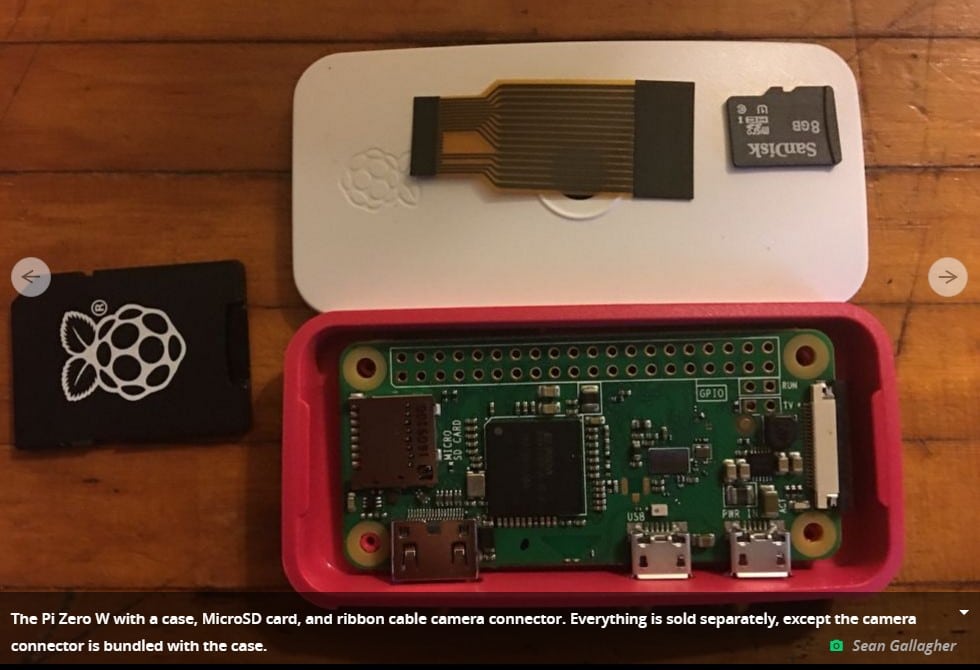Still tinier and cheaper than the flagship, the Raspberry Pi Zero goes wireless.
The newest member of the Raspberry Pi product line costs just $10 plus tax and includes Wi-Fi and Bluetooth capability.
The “Raspberry Pi Zero W” is an updated version of the Raspberry Pi Zero. While it lacks some niceties, like Ethernet and full-sized USB-A ports, it’s smaller than the flagship Pi and a fraction of the cost. The original Raspberry Pi Zero was released in November 2015 at a price of just $5/£4. The new Pi Zero W is almost identical to the original, but doubles the price to $10 and adds a wireless chip that supports 802.11b/g/n Wi-Fi (2.4GHz-only) and Bluetooth 4.0.
UK prices will be around £8 or £9, and the Zero W will be available for sale today through the foundation’s distributors, Raspberry Pi product evangelist Matt Richardson told Ars. It’s also the fifth anniversary of Raspberry Pi, which sold its first computers on February 29, 2012.
The Zero and Zero W use the same BCM2835 single-core chip that was in the original Raspberry Pi, but clocked at a higher speed of 1GHz instead of 700MHz. The Zero W uses a Cypress (formerly Broadcom) wireless chip that’s also used in the Raspberry Pi 3. When the Pi 3 was released, we were told that its maximum wireless speed was 150Mbps but that it would generally hit about 20 to 40Mbps.
“Other than adding Wi-Fi and Bluetooth, there’s no change [from the Zero to the Zero W]. We’ve added a wireless LAN and Bluetooth chipset to the board and a PCB antenna layout that we licensed from ProAnt in Sweden,” Richardson said.
Here’s a look at the Zero W’s other key specs:
- 512MB RAM
- Mini-HDMI and USB On-The-Go ports
- Micro-USB power
- HAT-compatible 40-pin header
- Composite video and reset headers
- CSI camera connector
The Zero and Zero W’s dimensions are 2.6″ x 1.2″ x 0.2″. The original Zero was 0.3 ounces, but the Zero W may be a tiny bit heavier. The flagship Raspberry Pi 3 Model B that costs $35/£28 (or more, depending on the retailer) has dimensions of 3.4″ x 2.3″ x 0.8″ and weighs 1.5 ounces.
The Zero W also has a new case with three interchangeable lids, one that’s solid, one with a hole for GPIO pins, and another with a hole for the camera module. There was no word on case pricing yesterday, as the Pi Foundation doesn’t control case prices the way it does with the computers themselves.
The Pi Zero includes a full-size GPIO header but maintains its slim profile because it doesn’t come with pins, which can be soldered on by the user. The Zero can handle the same types of projects as the original Pi, but its small size can be an advantage if you want to build a tiny robot (see page 24 in this issue of MagPi) or other small systems.
Original article here.




